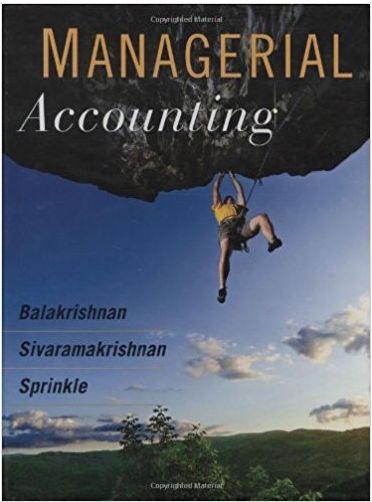Gerrys Guitar Shack is the happening place in Wichita, Kansas. Gerry has 400 square feet of usable
Question:
Gerry figures that he generates $5,000 of revenue per year per square foot from the ground floor. His typical markup is such that he makes $0.25 in contribution margin per dollar of revenue. Gerry also figures that each of his four salespersons costs him $50,000 annually, with additional fixed costs (rent, etc.) amounting to $100,000 a year.
The upstairs music cubicles also generate some revenue. Each ½ hour rental generates a $5 fee to the Guitar Shack. Gerry estimates that each cubicle is used 40 times a week during the 50 weeks a year the store is open. There are negligible variable costs associated with the cubicles, and traceable maintenance and other fixed expenses amount to $7,500 per year. (These costs are included in the $100,000 amount above.)
Gerry is getting somewhat tired of the music lessons. He believes that he spends too much time scheduling the rooms and dealing with conflicts and changes. Many of the musicians who give lessons also invariably spend time chatting with Gerry and the salespersons, and Gerry believes that such chatting does not help productivity. Given all of these factors, Gerry is considering remodeling the upstairs portion of his store to remove the cubicles and convert it to retail space. He figures that he can get 150 square feet of usable retail space, bringing the shop total to 550 square feet. Similar to the downstairs space, Gerry believes the remodeled upstairs would generate $5,000 in revenue per year per square foot. The added sales volume, however, would also trigger the need for two more salespersons. Finally, Gerry estimates that the traceable maintenance and other expenses for the remodeled upstairs space would amount to $10,000 per year.
Required:
a. Using controllable cost analysis, compute the expected change in Gerry’s annual profit associated with converting the upstairs to retail space.
b. What additional considerations do you believe Gerry needs to consider in this decision. For example, do you believe Gerry will be able to generate the same revenue per square foot in the expanded facility?
Contribution Margin
Contribution margin is an important element of cost volume profit analysis that managers carry out to assess the maximum number of units that are required to be at the breakeven point. Contribution margin is the profit before fixed cost and taxes...
Fantastic news! We've Found the answer you've been seeking!
Step by Step Answer:
Related Book For 

Managerial accounting
ISBN: 978-0471467854
1st edition
Authors: ramji balakrishnan, k. s i varamakrishnan, Geoffrey b. sprin
Question Posted:





